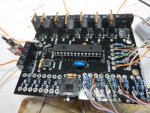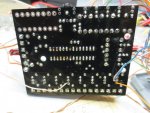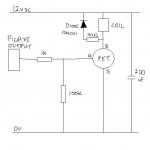Technical help, new user to picaxe
I have recently built my first project link below and all went Ok including the assembly, programming and testing using LED as indicators on the outputs, the outputs are driven by Mosfet transistors, the fault arises when I connect a relay or a dummy load at the output, the output voltage at the output which is 12v drops to 0 volts as if I put a dead short across the output, Thanks in advance for any suggestions.
Link http://www.rkeducation.co.uk/documen.../RKP28inst.pdf
Answer your question nick12ab and hopefully i am in the right area for posting my query.
The leds were connected after them.
The dummy load is a 10 ohm 10watt resistor and is connected across the drain and the positive 12 volt rail as in the cct in the link
I have recently built my first project link below and all went Ok including the assembly, programming and testing using LED as indicators on the outputs, the outputs are driven by Mosfet transistors, the fault arises when I connect a relay or a dummy load at the output, the output voltage at the output which is 12v drops to 0 volts as if I put a dead short across the output, Thanks in advance for any suggestions.
Link http://www.rkeducation.co.uk/documen.../RKP28inst.pdf
Answer your question nick12ab and hopefully i am in the right area for posting my query.
The leds were connected after them.
The dummy load is a 10 ohm 10watt resistor and is connected across the drain and the positive 12 volt rail as in the cct in the link




